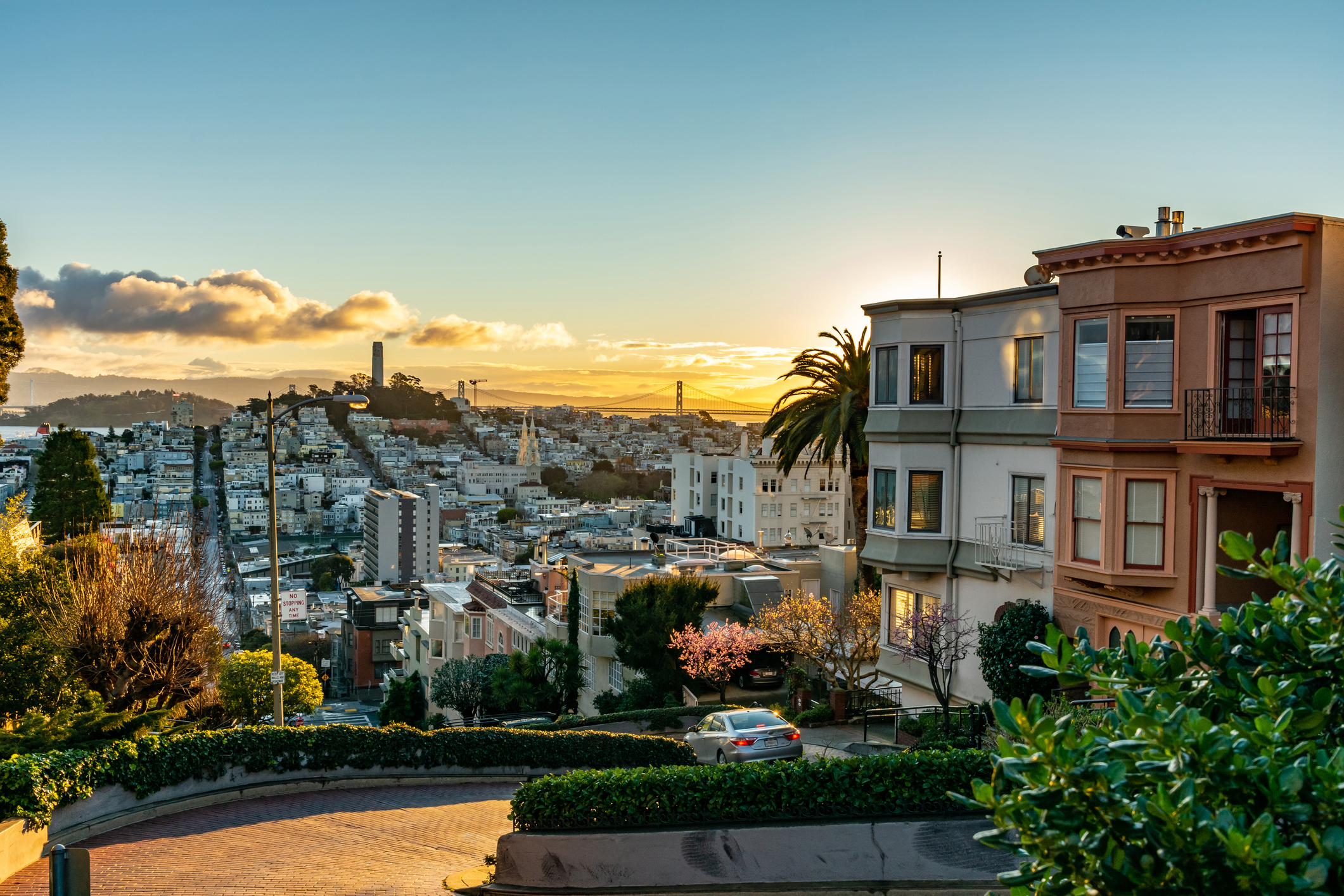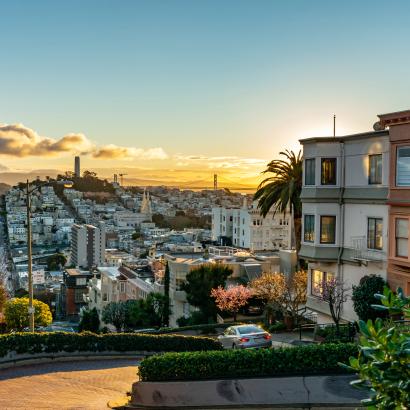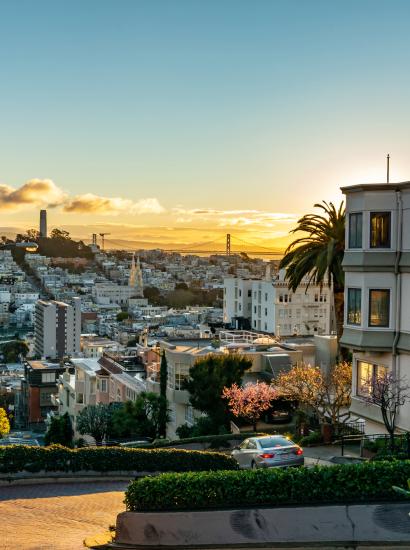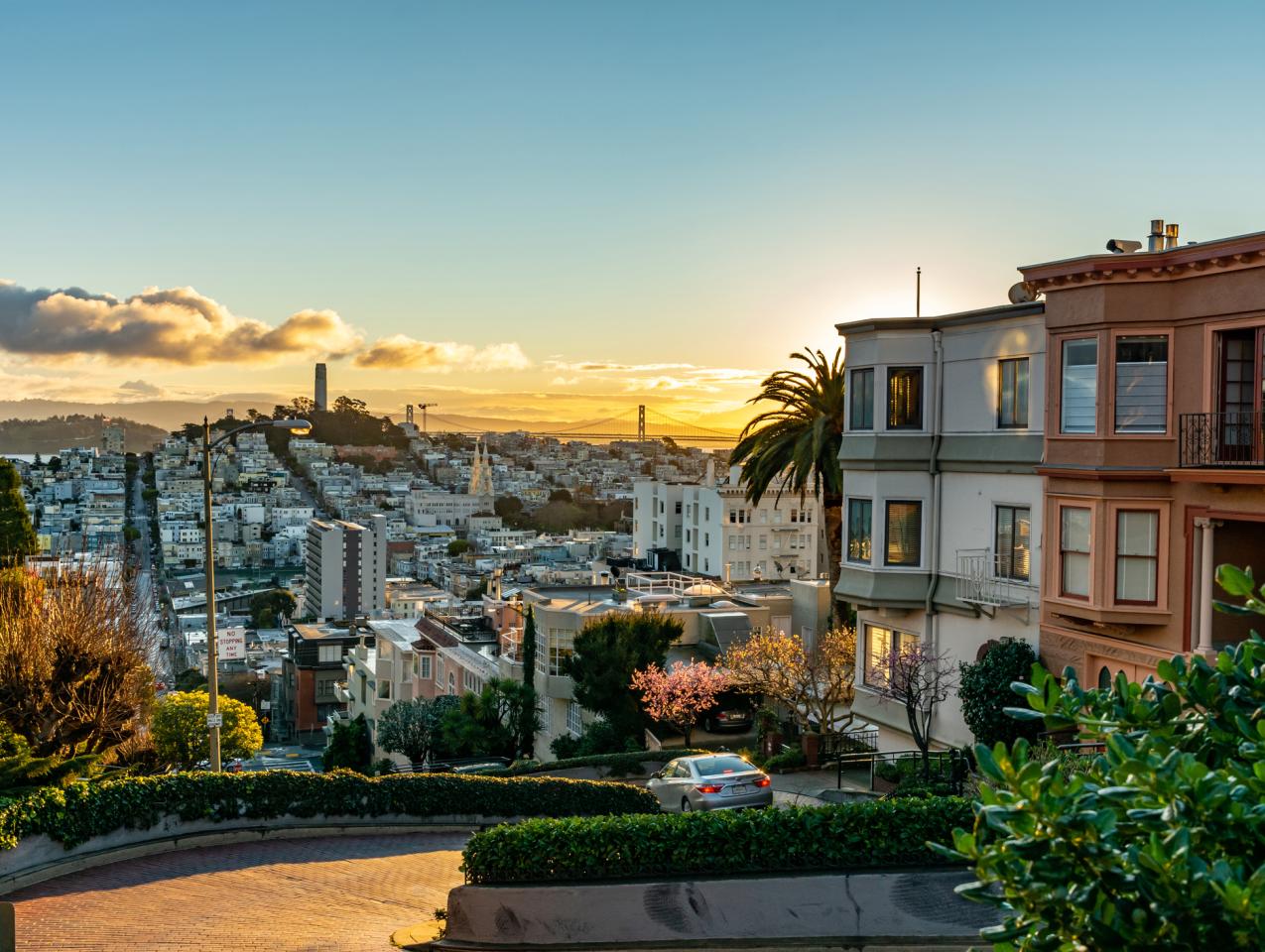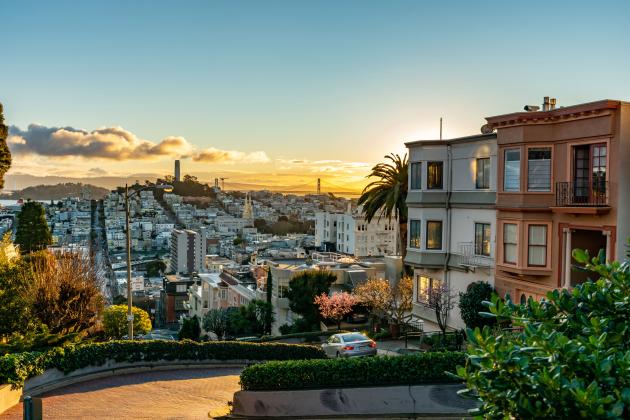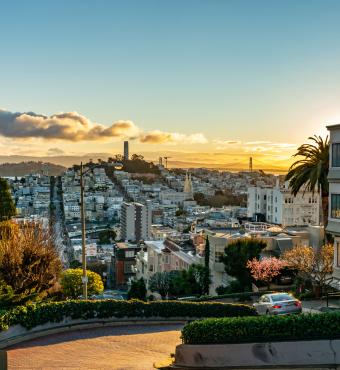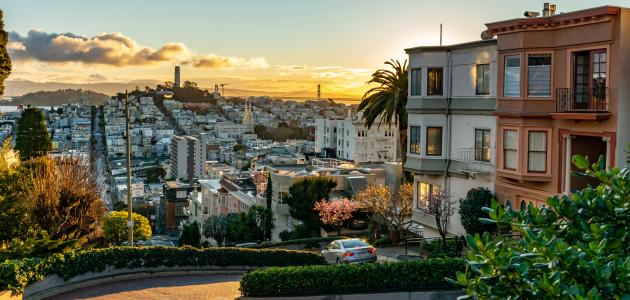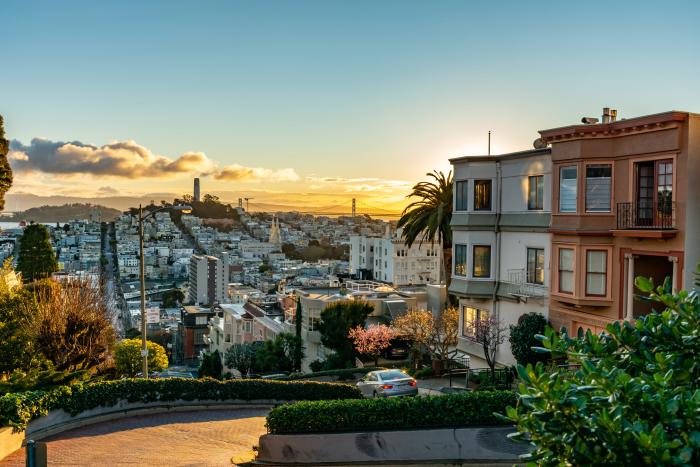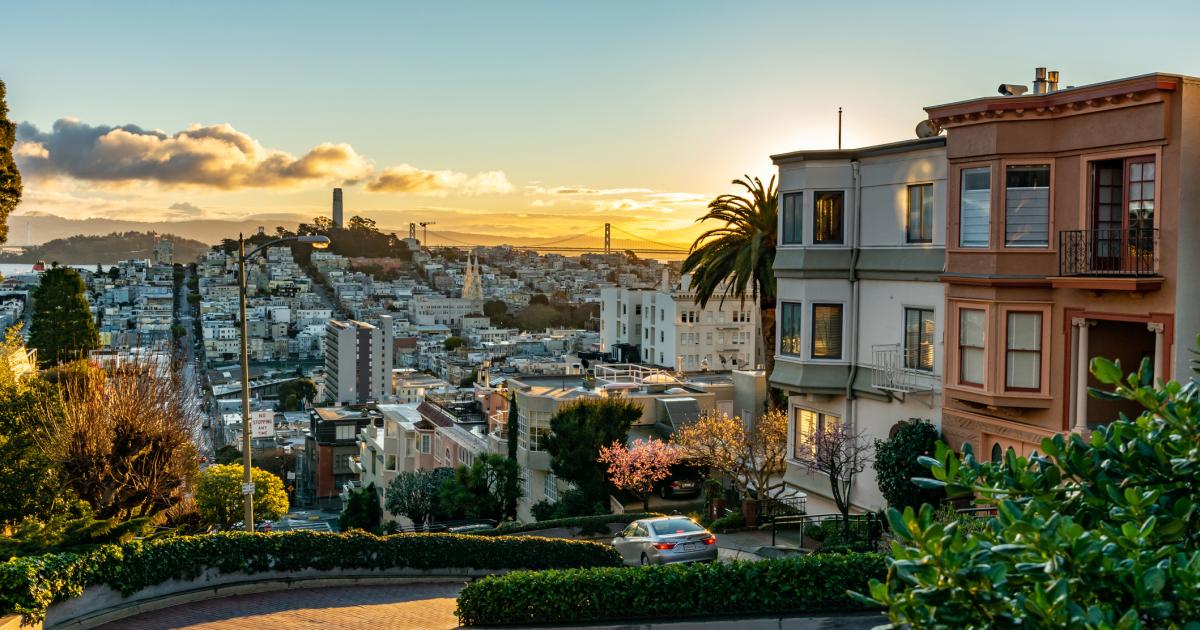Fitting for a part of California known for its seismic events, former president Donald Trump’s recent San Francisco fundraiser with members of the local tech community represented something of a shift in the Golden State’s political landscape.
It’s not that the Bay Area’s fabled “tech bros” have suddenly discovered an affinity for Trump’s favorite red ballcap, just as Trump wouldn’t dare be caught sporting a Bruno Cucinelli cashmere T-shirt (the designer favored by Mark Zuckerberg and the late Steve Jobs).
Nor is San Francisco ready to “see red” anytime in terms of presidential election results. While Trump and his campaign left San Francisco about $12 million wealthier, a street rally for the presumptive Republican nominee drew little interest. Small wonder: the city and county of San Francisco lent Trump a whopping 12.7% support in the last presidential election—an improvement upon the 9.2% that Trump received in November 2016.
So if this isn’t an outright seismic disturbance, what does Trump’s success in San Francisco represent? Try: a political marriage of convenience. The Trump campaign has been on the prowl for money, of which California’s tech community seems to have an inexhaustible supply (this is true for the Trump fundraiser, where the top tickets were $500,000 per couple). Tech leaders, in turn, are looking for a change of course in the nation’s capital (more on that in a moment).
As such, what California is seeing in 2024 is a rerun of the 1992 presidential election, when Bill Clinton made inroads into Silicon Valley C-suites.
About that past election: in September 1992, Clinton received the backing of a group of disenchanted Republican Silicon Valley executives headlined by John Sculley, at the time the CEO of Apple.
Sculley had a personal connection to the candidate—he’d worked alongside Hillary Clinton when the two served on a national education council.
But Sculley and his fellow CEOs were also looking to the future.
Keep in mind, in September 1992 the Information Age was poised to blossom. It would be another 14 months before the first webcam was connected to what’s now known as the Internet, followed 13 months later by version 1 of Netscape and, a year later, by the beginning of a dot-com “bubble” that sparked a new era of instant wealth in California.
For tech executives with an eye on what the next few years would hold, Clinton and his rhetoric of building a “bridge” to the 21st century—plus his and running mate Al Gore’s fascination with the so-called information superhighway—seemed a good Silicon Valley fit. (In August 2000, on the same day Gore gave his acceptance speech as the presidential nominee at that year’s Democratic National Convention, Nielsen announced that for the first time more than half of households in America had Internet access.)
By the way, in case you’re curious as to what happened to John Sculley after that election, it wasn’t a Hollywood ending for the Silicon Valley heavyweight. He gambled on the popularity of a revolutionary message pad called the Newton, only to see the device plagued by technological glitches (including handwriting technology that failed to recognize many words). By mid-June 1993, just nine months after his Clinton endorsement sent tremors through Silicon Valley, Sculley was out of a job (Apple’s stock having lost 83% of its value—from $4.33 to 73¢ a share—over the past year).
One final Sculley note: in 2016, he was back in the middle of another presidential election—this time not endorsing a candidate so much as warning folks not to underestimate Trump’s curbside appeal. “What Donald does is he understands, just like Steve Jobs did, the master of perception,” Sculley told a CNBC interviewer. “He can create something where people don’t care about the facts; what they care about is that he’s appealing to the disappearing middle class.”
Trump’s appearance in San Francisco was hardly the stuff of middle-class kitchen-table conversations, seeing as it occurred in a Pacific Heights mansion. But that doesn’t mean Trump failed to connect with the deep-pocketed audience, the candidate reportedly discussing artificial intelligence and foreign policy concerns.
Then again, it’s not like Biden lacked for talking points in building a case against the Biden presidency. Earlier in June, news emerged that the federal government will soon put Microsoft, Nvidia, and OpenAI under the antitrust spotlight. For years now, an increasingly noisy progressive wing of the Democratic Party has railed against America’s wealth class, perhaps to the chagrin of Silicon Valley’s well-to-do. “If you keep telling someone over and over again that they’re evil, they’re eventually not going to like that,“ one investor told The New York Times. “I see that in venture capital.”
One other thing California’s venture capitalists may not like (and let’s see if it makes its way into tonight’s presidential debate): a change in the federal capital gains tax, depending on who occupies the Oval Office and which party controls Congress a year from now.
Under a plan introduced earlier this year by the Biden administration, the long-term capital gains tax for high-income earners ($1 million in taxable income; $400,000 in investment income) would skyrocket to 39.6%—the same as for ordinary income. Add in a few other proposals and the new rate could reach 44.6%.
The California twist? As the Golden State treats capital gains the same as regular income, making no difference between short- and long-term gains, a high-end California earner would be looking at a nation-worst capital gains “hit” of 57.9% (here’s a map showing the 11 U.S. states that would be looking at a combined capital gains tax of 50% or more).
Does this leave an opening for Trump to campaign across California, making the case for less taxation?
Yes.
Should he do so?
Probably not, given that the Golden State remains out of reach for Trump—and for any Republican statewide candidate, for that matter—for the immediate future.
In 1992, Clinton had only the luxury of John Sculley’s endorsement but the added bonus of a GOP opponent who didn’t do all that well in the Golden State in the previous election (George H.W. Bush having received 51.1% of California’s vote versus nearly 53.4% nationally in 1988), plus a third-party candidate, Ross Perot, who managed to take 20.6% of the statewide vote. Thus, Clinton was able to carry California despite receiving 1.5% less support than Michael Dukakis received in 1998.
While Robert F. Kennedy Jr. could be a Perot-like disrupter in California in 2024, the problem for Trump is the starting point and a far wider gap than what Clinton faced in 1992 (ABC News’s polling aggregator, 538, gives Biden a 20-point lead, with Trump a shade below 30%).
Let’s put the ground Trump would have to make up in California into raw numbers:
In 2020, Biden carried the Golden State by 5.1 million votes, with nearly 17.5 ballots cast between the two major parties (Biden receiving a little over 11.1 million votes to Trump’s 6 million). Take away every one of the more than 4,812,500 votes that Biden received in Los Angeles, Sacramento, San Diego, and San Francisco Counties and he still manages to defeat Trump statewide by more than 291,000 votes.
Were California even remotely more competitive, Trump and his advisors would face a difficult strategic question: how best to allot the candidate’s time and campaign resources in two trios of relatively adjacent states—the midwestern triad of Michigan, Pennsylvania, and Wisconsin (a combined 44 electoral votes) versus the western combination of California, Arizona, and Nevada (71 electoral votes).
For Trump, California’s lopsided numbers make that strategy a no-brainer: stay out of the Golden State; concentrate on the five battleground states.
Unless, of course, tech execs want to make Trump another offer he can’t refuse.







